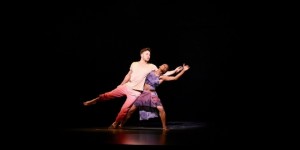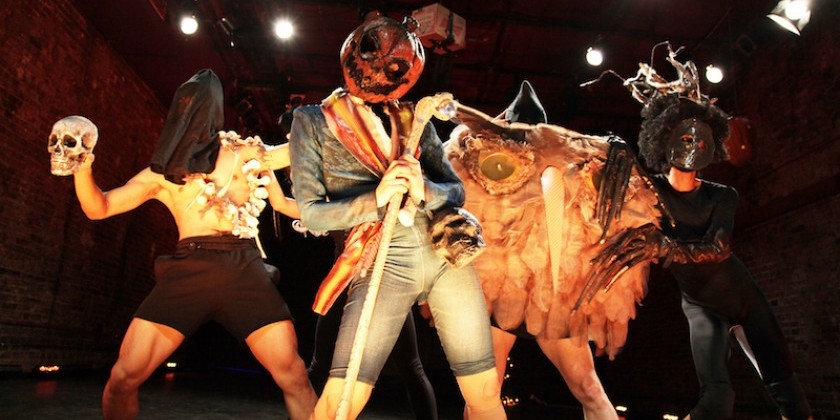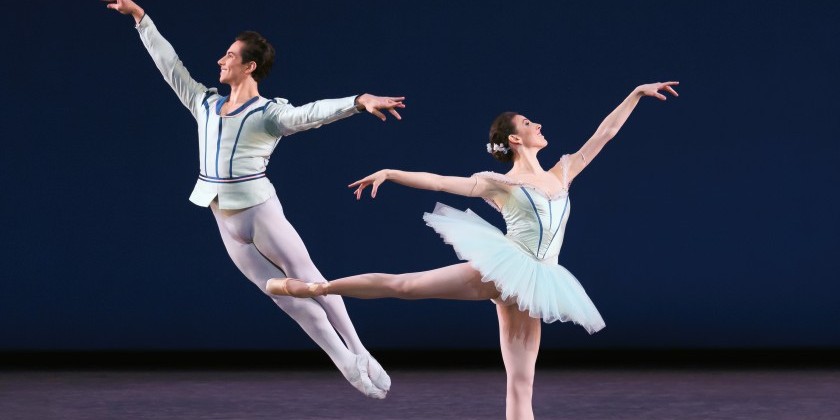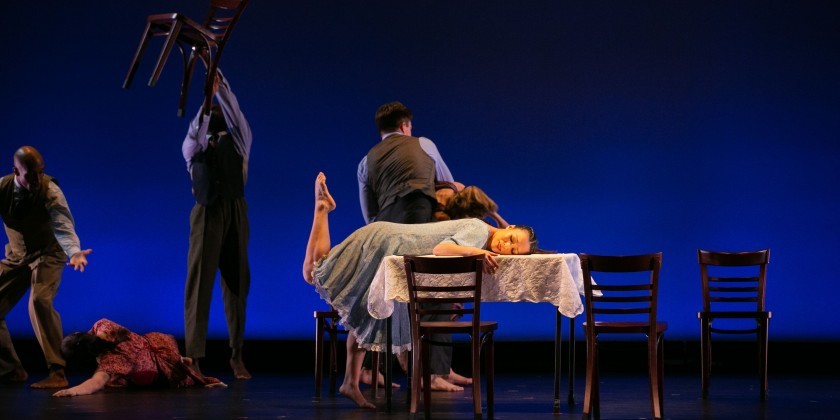IMPRESSIONS: “Message in a Bottle” at New York City Center with Songs by Sting, Direction & Choreography by Kate Prince
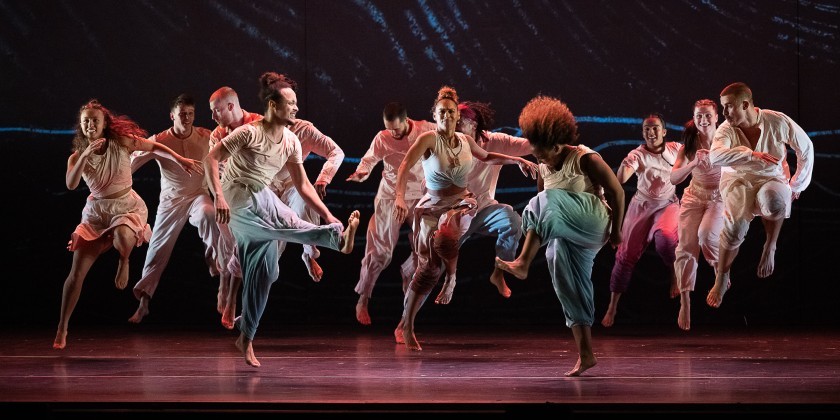
Direction & Choreography: Kate Prince
Music & Lyrics: Sting
Music Supervisor & New Arrangements: Alex Lacamoire
Music Producer & Arranger: Martin Terefe
Music Co-Producer & Mixer: Oskar Winberg
Set Designer: Ben Stones
Video Designer: Andrzej Goulding
Costume Designer: Anna Fleischle
Lighting Designer: Natasha Chivers
Sound Designer: David McEwan
Dramaturg: Lolita Chakrabarti
Associate Choreographer: Lukas McFarlane
Music Associate & Additional Arrangements: D.J. Walde
Assistant Choreographers: Tommy Franzén, Lizzie Gough
Performers: Oliver Andrews, Lindon Barr, Deavion Brown, David Cottle, Harrison Dowzell, Nestor Garcia Gonzalez, Natasha Gooden, Lizzie Gough, Megan Ingram, Ajani Johnson-Goffe, Charlotte Lee, Daniella May, Dylan Mayoral, Serena McCall, Lukas McFarlane, Nethra Menon, Robbie Ordona, Lara Renaud, Hannah Sandilands, Jessey Stol, Steven Thompson, Gavin Vincent, Malachi Welch
Venue: New York City Center
Dates: April 30 - May 12, 2024
A two-act, commercial-entertainment-style dance piece, set to new recordings of 27 familiar Sting songs (freshly arranged by Alex Lacamoire and Martin Terefe), “Message in a Bottle” serves up non-stop, high-octane dancing as it traces the fictional tale of a family fleeing their war-torn homeland. Directed and choreographed by five-time Olivier Award-nominee Kate Prince (with associate choreographer Lukas McFarlane), the dark-themed work takes inspiration from heart-wrenching photographs Prince saw of Syrian refugees, fused with her desire to create a theatrical production set to the rock icon’s distinctively affecting music. Premiered in London in 2020, aired on PBS last fall, and playing this spring at New York’s City Center, the show is a rafter-raising crowd-pleaser.

Amplified throughout to rock-concert volume, its score repurposes Sting’s songs to support plot points and characters in its imagined refugees’ story. The uplifting narrative follows a father, mother, two sons, and a daughter as they undergo a perilous journey, become separated, and ultimately re-connect — if not in reality, then surely in their memories and hopes for the future. Sometimes the songs’ repurposing works brilliantly, such as when “Don’t Stand So Close to Me,” originally written about an unseemly relationship between a teacher and pupil, is used to accompany a terrifying scene of male prison guards physically abusing fiercely-fighting-back females. On other occasions, the narrative connections feel uncomfortably forced. The sentiments contained in the lyrics of “If You Love Somebody, Set Them Free,” for example, feel too idealistic to underscore the actions of a refugee attempting to bribe a jailer for her freedom.
Spectacularly performed by 23 dancers from Prince’s London-based hip hop company, ZooNation (founded in 2002), the choreography comprises contemporary dance, b-boying, popping, Middle Eastern folk dancing, Lindy Hop, hip hop, and little doses of what look like Katherine Dunham-influenced Caribbean dance and even some Bollywood moves. But despite the range of dance forms, and the exquisitely smooth transitions Prince devises from one scene or choreographic idea to another, there is a sameness to the constant dancing that lessens its impact, and undermines the rich textural variety of the music.

At first, the jaw-dropping solo acrobatics and well-crafted, high-energy ensemble dancing prove stirring. But after a while we need it to stop, or slow down, so we can think about what we’re seeing, recognize how we’re feeling, or just “sit with” an image long enough for it to carve a memorable impression. The abundant movement washes over us too quickly and all we really remember is the compositional “building block” repeated throughout: whenever unison ensemble dancing occurs (which is much of the time) it shifts to one area of the stage as, every now and again, a soloist breaks away and performs a quick phrase of wowing b-boying, supersonic spins, or a flying leap that takes our breath away.

"Message In a Bottle." Photo: Christopher Duggan
While thrilling, and likely designed to maintain viewers’ attention, ironically, it becomes a distraction that compromises our ability to stay focused on any segment of the choreography long enough for it to deeply resonate. For instance, powerfully unnerving images of refugees crowded together on a rickety boat arise out of Prince’s clever arrangements of a clump of bodies clutching satchels and life jackets, backed by video designer Andrzej Goulding’s chilling projections of ferocious waves and torrential rain. We feel their anxiety, their petrified communal breaths, as the clump expands in and out on itself while the boat rocks on the rough seas. But just as the effect starts to take hold of us emotionally, one dancer, as usual, separates out from the group to perform some fancy b-boy freezes. What is he doing out there in the middle of the ocean? “Stay in the boat, you idiot,” I wanted to shout.

More frustrating, are the moments when the choreography doesn’t change with shifts in the music. As the score progresses through explorations of rock, jazz, classical, folk genres, and all sorts of instrumental colors, meters, rhythmic patterns, and vocal sounds, the choreography consistently proffers its high-energy blend of astonishing street dance framing passionate contemporary movement seasoned with ethnic flavors. The recipe never changes, nor does the earthy quality with which the dancing is performed. Following the electrifying sounds of “King of Pain,” a solo guitar passage introducing “Fragile” ushers in an appealing aesthetic change in the music. But because the choreography continues with the same solo breaking vocabulary seen just prior, one feels torn, and prevented from fully experiencing the musical shift. When the higher-pitched vocals and inspiring lyrics of “Invisible Sun” come in and wash away the harrowing sounds of the preceding “Don’t Stand So Close to Me” episode, I wanted to see the dancing swap its grounded, percussiveness for a light, lyrical sensibility. And to the bouncy pop-music sounds of “De Do Do Do, De Da Da Da,” I wanted to see that bounce imbued in the dancers’ movements. Granted, when strains of “Shadows in the Rain” begin, signaling an emotional shift — from the heart-stopping fear of drowning to the recognition that one’s spirits have not been quashed — Prince incorporates strikingly different dance steps, drawn from the Lindy Hop. I only wished the jazzy social-dance footwork exuded more of the Lindy’s characteristic gliding quality, rather than the same weight and punch we’d been served all evening.

In terms of variety, the choreography fares better in the second act, thanks to set pieces (by Ben Stones) and costumes (by Anna Fleischle) that seem to demand new physical vocabulary. Metal bars arranged in cubes, suggesting cell-like structures of a prison camp, elicit exciting gymnastics as dancers hang, swing, straddle, and twirl amid them in riveting cat-and-mouse games. In a joyful scene, when the shoreline spelling their safety is celebrated as an island paradise, the ensemble’s ankle-length skirts prompt lively fabric-swishing movements that accentuate the lilt of refreshing Caribbean-flavored dance. Later, the snooty milieu and upscale fashions of a swanky nightclub setting, for “Englishman in New York,” spark the evening’s most theatrical choreography, as Charleston steps and other absurdly jerky ballroom-dance maneuvers entertainingly replace the dangerous feel of the gritty hip hop vocabulary.

While the dramatic action of the plot is very clearly depicted via symbolic gestures and Prince’s skillful staging, the drama’s rich emotional content is not communicated choreographically, but rather by the performers’ acting — their facial expressions, and the feelings they miraculously manage to communicate even while executing their stunning array of technically-challenging tricks. McFarlane, dancing the role of the older son, is the outstanding cast member in this regard. A great performer with jumping technique that gives new meaning to the word “soar,” McFarlane projects emotion with similarly outsized amplitude, and exudes heated, star-quality charisma.

Yet the most intriguing component of this big, loud production is its only subtle element: the hanging orb. A literal reference to the storyline’s metaphorical, hope-providing “invisible sun,” the circular cut-out sports wee marks that register as eyes and lips and vary from number to number to form changing expressions. Sometimes the “sun” looks down on the action with protective warmth, while other times it smiles kindly, displays concern, or gasps in shock. In the second act, it wears a vertical-striped “mask” of neon lights that disguise, but don’t completely obliterate, its facial features. I found myself re-visiting it often throughout the boisterous evening, driven, I think, by a need for some moments of understated expressiveness.






